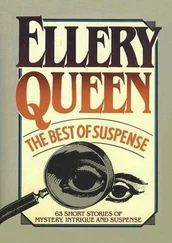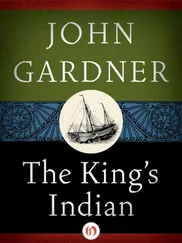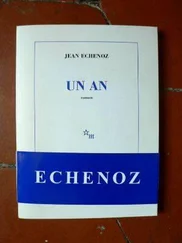Jean Echenoz
The Queen's Caprice: Stories
For the publication in English of his Caprice de la reine, Jean Echenoz has made a few minor changes in the texts. These seven récits are his favorite occasional pieces, written on subjects that inspired the author to observe, improvise, invent — for although these stories sometimes spring from historical incident, they are in the end what Echenoz wished to create: “little literary objects.”
This tension between story and history depends in part on the ability of the reader to catch allusions and follow undercurrents of meaning that are reasonably clear to French readers but may pass completely unnoticed in English. I have therefore provided endnotes for some of these references and for a few other points of interest as well.
— Linda Coverdale
WINTER 1802, MANOR HOUSE in the English countryside, Admiral Nelson is coming to dinner. The other guests hurry over as soon as he appears in the drawing room among the candelabra, wall hangings, copper- and brassware, ancestral portraits, floral paintings, flowers. Although still battle-worn from the engagement at Copenhagen, 1he is admired; he does look tired, they reflect, but my he’s handsome think the ladies. Tired, of course, and rightly so, after all he’s been through.
Already — so awkward for a sailor — there’d been that affliction he had experienced as a thirteen-year-old seaman upon first joining a warship, the third-rate HMS Raisonnable. He had thought it would pass but no, he had never ceased to suffer terribly, day after day, throughout his thirty years at sea, from seasickness.
So they fuss over him, this man in an armchair near the large window overlooking some ingeniously informal gardens bordered by underbrush and backed by a wall of trees. Brandishing a tray of quivering glasses, a footman leans toward Nelson, who plucks one of them with a languid hand. Nelson is a small, thin man, affable, youthful in appearance, very handsome indeed but perhaps a trifle pale. And though he smiles like an actor playing Admiral Nelson, he seems quite fragile, friable, on the verge of fracturing into pieces.
A slender form wearing white stockings, steel-buckled shoes, white waistcoat and knee-breeches under a blue frock coat, of which the left pocket bulges with what seems like a handful of shillings and the left breast glitters with the Order of the Bath. Nelson’s eyes sparkle as well but each with a different luster, the right one less brightly than the other. And if his hand hesitates in picking up his glass, the problem is that having contracted malaria in the Indies about twenty-five years earlier, while serving on the frigate HMS Seahorse, he has been plagued ever since by recurrent fevers, headaches, polyneuritis, and the attendant tremors.
Since the conversation in the drawing room concerns the Treaty of Amiens, the admiral’s attention is drawn to a delicate point regarding the evacuation of the island of Elba; he is handed a newspaper that addresses the matter. Nelson places the page to his left, at an angle, and seems able to read it only in this manner, sideways — for another problem is that during the bombardment of Calvi in Corsica, while he was in command of the sixty-four-gun HMS Agamemnon, the impact of a round shot showered his face with stone shards that cost him the vision in his right eye. 2
Everyone sits down to dinner and even though small portions have been precut for the admiral, he displays deft skill in plying his knife and fork with his one hand — for yet another problem is that while his flagship HMS Theseus lay off Santa Cruz de Tenerife, where Nelson attempted to seize the port city so as to relieve enemy ships of their gold bullion, he was hit by a musket ball that, fracturing his humerus in several places, deprived him of the use of his promptly amputated right arm.
Left left-handed, the admiral had therefore to relearn how to write and how to eat with utensils at the table — although he does resort daily to opium to relieve the pain in his phantom limb — and he acquits himself handsomely: the dinner proceeds without a hitch. Upon observing, however, that twilight is coming on, that candlesticks will soon be carried in, Nelson now rises abruptly between two courses, requests somewhat stiffly that the company please excuse him for a few minutes, and withdraws. He leaves the dining room, passes through antechambers and sitting rooms, then goes outside to the garden while the guests look at one another and frown.
Thus one-eyed, one-armed, and feverish, the admiral finds himself among the flower beds and clumps of shrubs before going off on his own toward the woods, incidentally passing a garden shed where he borrows a full watering can. He advances into the fading daylight; he loves the contemplation of countryside, woods, and forests. He could almost live there but, rather anxious to return to sea, he prefers to visit other people’s homes to perform the following operation.
At the edge of the wood, Nelson paces off the distance to the first trees: measuring, he selects various spots about twenty yards apart and marks each of them with a pebble. Kneeling at the first place, he begins digging a hole two to three inches deep — not so easy with only one hand, but the admiral is handy with his. The job done, he feels around in his pocket to pull out not the imagined handful of shillings but a dozen acorns, placing one at the bottom of this hole he then fills in again, carefully tamping down the earth he next waters just enough, he thinks (a touch too much, actually), after which Nelson repeats this operation as many times as his supply of acorns allows.
For he takes the very long view of things: he is retimbering and never passes up an opportunity, when away from the open sea on dry land, to sow the latter to ensure on the former, for future generations, adequate naval traffic. He has set his heart on planting trees whose trunks will serve to build the future royal fleet. From these acorns he buries will spring the masts, hulls, decks and ’tweendecks of every manner of vessel destined for commerce or the transportation of men — but warships of all kinds above all: ships of the line, corvettes, armored vessels, frigates, and destroyers that will sail the world’s oceans long after he is gone, for the greater glory of the empire.
Yet the stout oaks of Suffolk serve not only to build ships: kegs and casks are also made from them — barrels that are carried aboard ships, moreover, and which can be of goodly service. In that vein, at Trafalgar, after the French sailor Guillemard 3draws a bead on Nelson pacing the deck of the HMS Victory, and once the musket ball enters the admiral’s body through the left shoulder, fracturing the acromion plus the second and third ribs, traversing the lung and slicing through a branch of the pulmonary artery before shattering his spine, everyone will wonder what to do with his corpse. Then they will recall that the admiral had desired, instead of being tossed overboard as dead sailors usually are, to be buried at home. To preserve Nelson until his return to England, he will therefore be immersed in a barrel of brandy, which will be sealed, strapped to the ship’s mainmast, and placed under close armed guard.
TO THE RIGHT OF the hand writing this lies first a terrace of faux pebble-stone tiles, with a balustrade topped by an aluminum handrail and formed by a series of Plexiglas panels through which we see the lower part of the panorama. This terrace overlooks a vast, triangular, and gently sloping lawn extending at its lower end into a more abrupt declivity, almost a bluff, bordered by a grove of evergreen oaks below which, when the wind is favorable, an invisible torrent sends muted news of its progress. So the bluff leads into a trough one might qualify as a trench, a canyon, or, more simply, a ravine. Let’s go with ravine.
Читать дальше











